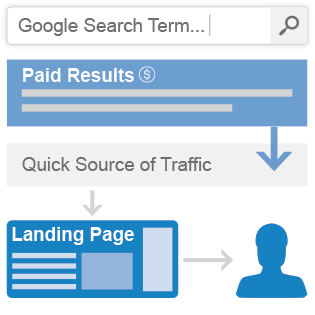Topics:
Marketing ResourcesSubscribe now and get the latest podcast releases delivered straight to your inbox.

When we think of marketers and market research, we tend to think of two-way mirrors and focus groups. We think about extensive planning. We think “expensive”. But thanks to the Internet, no matter what your budget may be, you can still conduct great market research online without the need for expensive marketers or marketing teams.
Conducting your own marketing research is important for a number of reasons:
- It helps you define your target niche/potential leads
- It helps you change and improve your marketing message
- It helps you decide which direction you want to take your marketing in
- It helps establish you and your company as a credible and reliable source of industry information
TIP: For an in-depth look at what may be missing from your marketing strategy, download our free Ebook “Key Components that are Missing from your Marketing Strategy."
Getting Started with Market Research
Before you get down to the business of researching, you’ll want to get the following tasks accomplished first:
- Identify what you’re trying to figure out or what you want to know
- Write up a draft with all of your questions and your hypothesis on how you think people will respond
- Locate the “right people” to be used for your research (you can do this based on information you’ve obtained through your CRM, through social media, site/blog visitors, etc.)
- Figure out how you should best present your questions (Through Twitter? A survey? An online poll?)
- Analyze the information
Surveys
Surveys are, by far, the most popular way to conduct online research. They can also be the most complicated, so we’ll get into how to do them and how NOT to do them.
Start off by choosing the right software to conduct the surveys. Sites like Zoomerang or SurveyMonkey are great since they also offer reporting options that can easily be exported for your own personal use. Though the reporting is mostly quantitative, you can make use of other third party tools for a more in depth qualitative analysis, enlist in the help of an inbound marketing agency, or try out Google’s “Consumer Surveys” tool that gives you more aggregated responses. The downside: It’ll cost you $0.10 per response, but when it comes to marketing expenditures, that price is well worth the information you’re getting in return.
When coming up with questions for your survey, make sure that you’re only asking the questions that need to be asked. The longer your survey is, the higher the abandonment rate will be, so keep it short and sweet.
TIP: To help reduce an abandonment rate, inform people upfront how long the survey should take and provide a progress bar at the bottom of each page of the survey that shows how much longer a participant may expect to spend on the survey.
When creating your questions, keep in mind whether you’re going for a quantitative response or a qualitative response. In general:
- Qualitative questions ask “what”, “why”, or “how do you…”
- Quantitative questions ask “which”, “how many” or “how often”
Polls
Polls are great for quantitative data and often have the best turnout when it comes to research. The reason behind this is simple: taking a poll can take about one second to complete, so people think, “Why not?” Again, keeping things as short and sweet as possible will ensure a greater turn out than using lengthy research processes.
Social Media
Social media is a great resource when it comes to getting feedback and free marketing information. Social networking sites like Twitter and Facebook are arguably the best ways of getting qualitative information in a very short period of time. Facebook and Twitter allows you to create lists that you may want to use for market targeting, Google+ has the “Circles” functionality, and LinkedIn is even getting in on this by offering better content targeting functions.
Use Public Records
A good way to get started with any sort of marketing research is to use records that already exist and may apply to marketers and companies. Gathering information from government sites and census bureaus are a good place to start, though use Google and other search functions to look up news stories form the area you’re interested in obtaining information in for more statistical and background information.
Key Takeaways:
Conducting research on your own may result in a smaller sample size, but using tools like online surveys, polls, social media and public records is a fantastic less expensive alternative that may even provide you with more relevant results than large-scale research reports.
Need Help?
If you're interested in learning more about conducting market research for your company but are having trouble getting started, contact us today to schedule a free marketing analysis.


Order Your Copy of Marcus Sheridan's New Book — Endless Customers!

